Electric hybrid vehicle
Electric hybrid vehicles are powered by either or both electricity and fossil fuel. They are far from new. In 1898, Ferdinand Porsche developed a hybrid car (the Lohner-Porsche). Its petrol engine ran a generator powering electric motors in its front wheels. The car had a range of 60 km (about 37 miles) from batteries alone.

The 1898 Lohner-Porsche- the first hybrid car. Pic: Original source not known.
In 1905, American H. Piper applied for a patent for a petrol-electric hybrid vehicle. It was claimed to reach 40 km/h (25 mph) in ten seconds. The patent took a long time before granting. By the time it was, petrol-fuelled vehicles achieved similar performance.
Woods Motor Company Dual Power
The best-known early hybrid is the Woods Dual Power Model 44 Coupe. It was made from 1917-1918. The vehicle had four-cylinder 10.5 kW petrol engine. This coupled to an electric motor. The motor was powered by 115 Ah lead-acid batteries. Below 24 km/h (15 mph) the car ran from electricity. Above that, the petrol engine took over. Maximum speed was about 55 km/h (34 mph). Much like today’s hybrid cars, it had regenerative braking. Reversing was by causing the electric motor to run backwards.
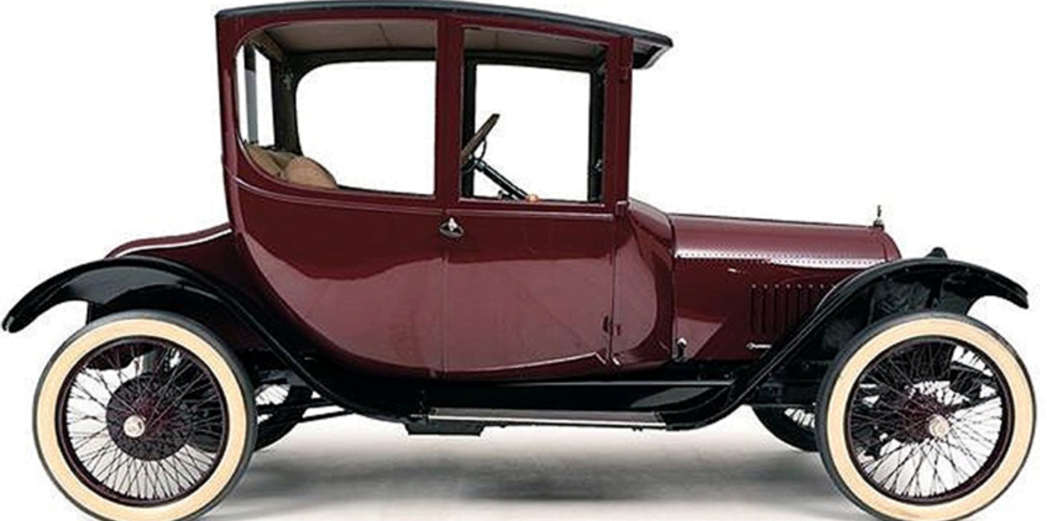
The Woods petrol-electric hybrid. Pic: courtesy of Petersen Automotive Museum Archives
The Woods car was promoted as having unlimited mileage, adequate speed and great economy. Also that it was faster than most electric cars. It was very costly. Only a few hundred were sold.
The first era of electric cars was ending. Whilst quieter, none could compete with Ford’s petrol Model T. Furthermore, battery development was static. Moreover, there was thus little incentive to develop electric motive power.
Hybrid revival
Hybrid development re-arose in the USA and Japan. Due to increasing air pollution, in 1966 the U.S. Congress recommended electric-powered vehicles. One (in 1969) was General Motors’ experimental hybrid. It used electric power to 16 km/h (10 mph). It then used electric and petrol power until 21 km/h (about 13 mph). From thereon it ran on petrol. Its maximum speed was about 65 km/h (about 40 mph).
The Arab oil embargo (1973) increased interest in electric powered vehicles. One result was Volkswagen’s experimental petrol/ battery hybrid. It was not, however, mass-produced. Another was the US Postal Service trialled battery-powered vans.
In 1976, the USA encouraged developing hybrid-electric components. Furthermore,Toyota built its first (experimental) hybrid. It used a gas-turbine generator to power an electric motor.
In 1980, lawn-mower maker Briggs and Stratton developed a hybrid car. It was driven by a twin cylinder 6 kW engine. It ran on ethanol, an electric motor, or both. Twin rear wheels bore 500 kg of batteries. It could travel 50 to 110 km (31-70 miles) in electric mode, and about 320 km in hybrid. The car was a promotion for the maker’s lawn-mowers. To put it mildly, its adverse power/weight limited performance. Its reported time to reach 80 km/h (50 mph) in combined mode was 35 seconds. By comparison, even today’s slowest cars need only a few seconds.
 The Briggs and Stratton hybrid. Impressive visually –but seriously underpowered.
The Briggs and Stratton hybrid. Impressive visually –but seriously underpowered.
A battery boost
A major boost for hybrid vehicles was the USA’s (1991) ‘Advanced Battery Consortium’. It aimed at producing a compact battery. The US$90 million cost resulted in nickel hydride batteries. These had about three times the capacity of comparable lead-acid batteries. This was still less than needed. It did, however, enable a new generation of electric vehicles. Hybrid and otherwise.
Toyota’s ‘Earth Charter’
In 1992 Toyota outlined its ‘Earth Charter’. Its intention was to develop and market vehicles with minimal emissions. Also that year, the USA sought low emission cars. The aim was fuel usage under 3.0 litres/100 km. Three prototypes (all hybrids) resulted. For likely political reasons, Toyota was formally excluded.
That decision back-fired. It prompted Toyota to create the Prius. That car initially went on sale, in Japan, in December 1997.
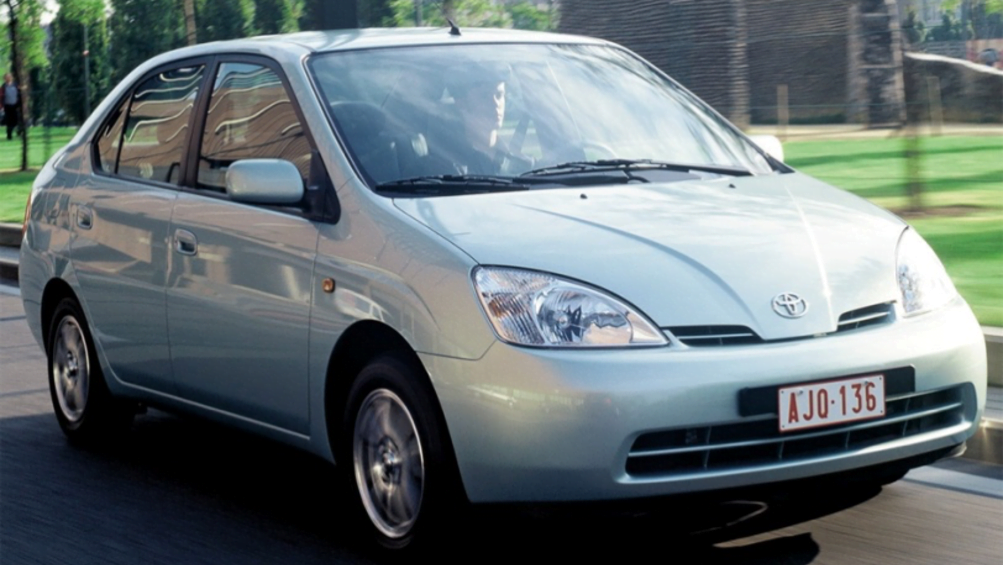
The original (1997) model NHW10 Toyota Prius. This initial model was sold only in Japan. Some, however, were imported privately into many countries. Pic: Original source unknown.
The initial version’s petrol engine produced 43 kW. Its electric motor produced 29.4 kW. It was powered by nickel-metal hydride batteries. Torque (at zero rpm) was 305 Nm. Later models had a larger petrol engine. It produced 53 kW and 115 Nm torque.
The car was an instant success. Some buyers waited six months for delivery. The Toyota Prius was launched in Australia in 2001.
European hybrids
In 1997, Audi mass-produced a hybrid. It was powered by a 67 kW 1.9-litre turbo-diesel engine. It also had a 21.6 kW electric motor. This was powered by a lead-acid gel battery. The car, however, failed to attract buyers.
Audi’s experience caused Europe to concentrate on reducing diesel emissions. Doing so, however, had ‘limitations’. Because their emissions fell far short of EU requirements, some makers illegally disguised the true levels.
Meanwhile, most electric and hybrid development was in the USA and Asia. Progress in Europe was initially slow. Now, however, (2020) there are many European electric and hybrids.
Owned by BMW, the first Mini hybrid had a 1.5-litre three-cylinder petrol turbo engine. Its electric motor had 65 kW of power and 165Nm of torque. It was powered by a 7.6kWh lithium battery. BMW claims it can travel to 40 km (about 25 miles) on electric power. A later version has a claimed 47 km (29.3 miles) range. Fuel economy is claimed to be 2.1 litres/100km. CO2 emissions are claimed to be 49 g/km.
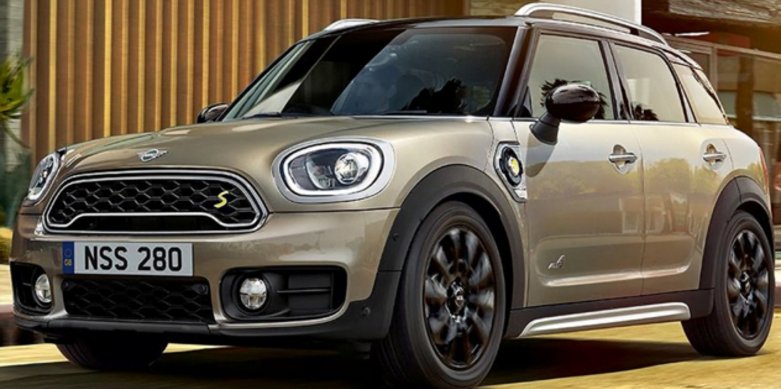
Mini hybrid –the Countryman S E ALL4. Pic: https://www.mini.co.uk
BMW’s own hybrid initially used a 0.65 litre petrol engine to charge the drive battery (if needed). The car has since been replaced by an all-electric version. The 42.2 kWh battery enables a claimed range of 310 km (194 miles).
Porsche has two hybrids. The 2019 Cayenne E-Hybrid has a 3-litre turbocharged petrol engine. It is claimed to produce 250 kW and 450 Nm torque. An electric motor adds an additional 100 kW. Plus 400 Nm torque.
The Porsche Panamera 4 (hybrid) is much as the Cayenne hybrid. Its Turbo S E-Hybrid has a twin-turbo 4.0-litre V8 petrol engine. It develops over 505 kW and 850 Nm. Its claimed all-electric range is 22.5 km (14 miles). Furthermore, it is claimed to use 4.9-litre of petrol per 100 km (62 miles).
Volvo’s aim is to have either ‘mild’ hybrids, plug-in hybrids or battery electric cars by 2021. It plans to sell one million hybrids. Its V40 model will have a choice of engines, plus a rear axle-mounted electric motor.
Hybrid off-road vehicles
Hybrid drive works well off-road. The electric motor increases power. The fossil-fuelled motor extends range. Few however, meet 2020 Euro 7 emissions requirements. Fortunately, many have ample space for batteries. This eases their possibly legally required future conversion.
One example is the Lexus RX 450h. It retains its 3.5-litre V6, but has three electric motors energised by a 123 kW battery. This only marginally increases power (i.e. from 221 kW to 230 kW). It does, however, reduce fuel consumption. That claimed is from 9.6 litres/100 km (62 miles), to a commendable 5.7 litres/100 km.
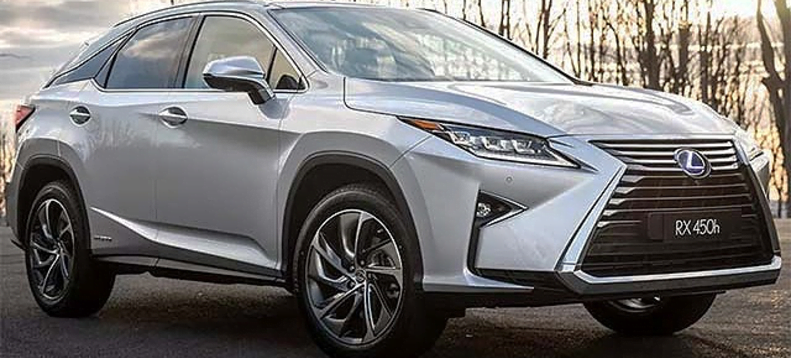
Lexus 450h. Pic: Toyota
The Mitsubishi Outlander LS and Exceed have a two-litre petrol engine and twin electric motors. They can travel up to 55 km on their lithium batteries. Their claimed fuel usage is 1.7 litres per 100 km (62 miles).
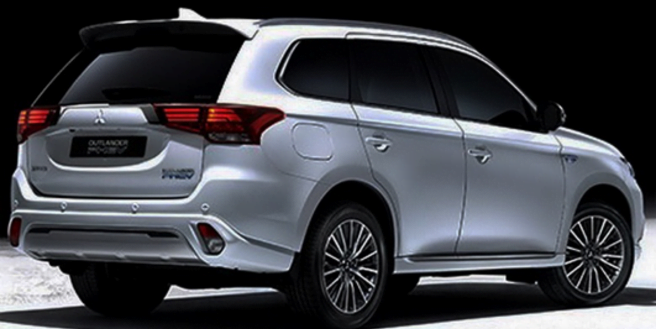
Mitsubishi (2019 Outlander hybrid. Pic: MitsubisiNissan’s
The Nissan Pathfinder Hybrid is available in 2WD or 4WD. Each has a 2.5-litre cylinder supercharged petrol engine of 201 kW and 330 Nm. Its 12.3 kW electric motor is powered by lithium batteries. These are charged by the engine’s alternator, and regenerative braking. Fuel use is a claimed 8.6 litres per 100 km. The battery packs are under the forward-most part of the boot floor.
Subaru’s XV Hybrid uses a 2.0-litre, flat-four direct-injection petrol engine producing 110 kW of power (down from 115kW in the rest of the range) at 6000rpm and 196Nm of torque at 4000rpm. It has a lithium battery and electric motor to assist the petrol engine. It can be driven as electric only, electric motor assist or petrol engine only driving modes.
The Range Rover hybrid has all-new light alloy monocoque construction. It is unusual in being diesel-electric. The 2020 PHEV P400e’s combined power is 297 kW. The maker claims a range of up to 48 km (30 miles) in electric mode. Regenerative braking assists charging.
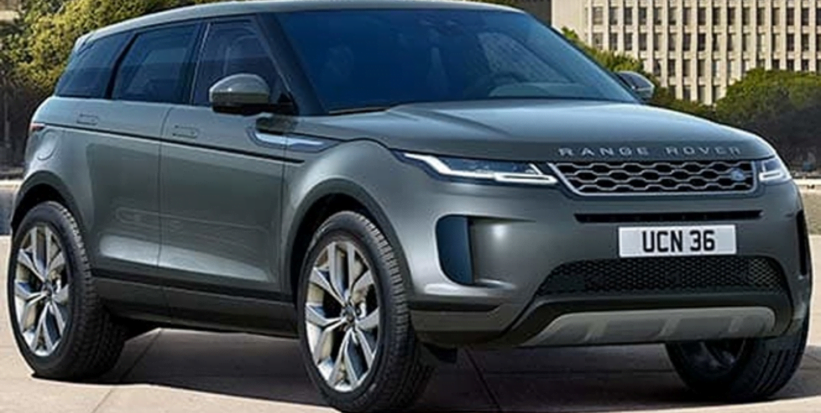
The Range Rover Evoque hybrid. Pic: landrover.com
The Land Rover is (now) much the same vehicle. It is, however, marketed as a more serious 4WD. It is, however, not necessarily cheaper. A few models (e.g. the LR4 HSE LUX) are more costly than Range Rovers.
Hybrid vehicles and emissions
When comparing emissions, fossil-fuelled power station efficiency needs taking into account. Most convert about 38% of their fuel into usable energy. Petrol burned by cars converts only 25%.
Energy is also lost in producing petrol and diesel. It is also lost in conveying electricity from power station to electric outlets. Furthermore, in charging electric (and hybrid) car batteries.
The National Transport Commission report assesses CO2 emissions intensity of passenger cars and light commercial vehicles in Australia. The data shows average CO2 emissions of all new cars sold in Australia during 2019 was 180.5 g/km. This is far higher than for new passenger vehicles in Europe. There, (using provisional European data) it was 120.4 g/km. Moreover, corresponding figures in Japan and the USA were 114.6 g/km and 145.8 g/km, respectively, in 2017. As that if latest available data, such emissions are almost certainly now even lower.
The National Transport Commission report reveals that Australia’s result is largely due to the increased popularity of dual cab utes and SUVs. These are three largest CO2 contributing vehicle segments. Furthermore, there are also few Australian government incentives for lower emissions vehicles. Moreover, Australia’s fuel prices are low compared with Europe.
In 2019 Suzuki is reported as having the lowest average emissions intensity (128 g/km). Ford is reported as having the highest (210 g/km). A Prius Hybrid emits 107 gram of CO2 per km.
Emissions: petrol versus diesel
On average, the CO2 emissions of diesel cars (127.0 g CO2/km) are now very close to those of petrol cars (127.6 g CO2/km). Moreover, that difference, of only 0.6 g CO2/km, was the lowest observed since the beginning of the monitoring. Diesel emissions, however, are more harmful. Furthermore, they are all-but impossible to reduce much further.
The majority of new SUVs registered are powered by petrol. Their average emissions are 134 g CO2/km. This is around 13 g per CO2/km higher than the average emissions of new petrol non-SUV passenger cars.
See also Electric Vehicles – Thermodynamic Efficiency & Emissions.
Solar-powered electric vehicles
If adequate solar energy is available an all-electric car is virtually non-polluting. There is a minor emission of rubber particles from the tyres. However, there is no equivalent of ‘tailpipe’ emissions.
Battery making, however, is seriously polluting. It is common to hybrid and all-electric cars – excepting that the latter have larger capacity batteries. See also Solar Charging Your Electric Car at Home.
An initially promising all-terrain electric car (the Tomcat) was designed and built in Australia in 2012. The first 100 sold out almost immediately. High manufacturing costs (and investor concerns) resulted in the company entering voluntary administration in February 2018.

The all-terrain electric Tomcat – sadly no more. Pic: Tomcat
The Electric Vehicle Series
This is a part of a series of articles about the history and technology involved in electric hybrid vehicles.




